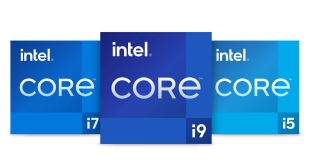The Z68 Extreme7 Gen3 is another extremely impressive motherboard from ASrock and actually one of the finest Z68 products I have tested to date. ASrock have had to work hard to build up a solid reputation, being considered by many as a ‘budget' oriented manufacturer. This year they have put that preconception firmly behind them.
We think the ASrock bios configurations are some of the best on the market. They always offer a series of preset overclocked configurations for inexperienced users which are extremely easy to enable. Their motherboards detect the processor which is installed and then offer various settings to suit a wide audience. Overclocking the Core i7 2600k from 3.4ghz to 4.6ghz simply required a single bios change. A 1.2ghz rock solid overclock with minimal effort really deserves special mention.
While 4.6ghz is easy enough to achieve with a Core i7 2600k we did test later with a Noctua NH D14 cooler and found that 5ghz was rock solid at 1.48 volts. If you spend more on the cooling, and know your way around the bios then the Extreme7 Gen3 will certainly reward.
In regards to features, this board will satisfy even the most demanding of user. There is Dual Lan teaming, support for 2 way (x16/x16) and 3 way SLI and Crossfire configurations. ASrock have also included the PLX PEX8608 chip to improve the PCIE capabilities. Additionally we have Sata 6gbps, USB 3.0, digital PWM and onboard Intel HD graphics support. Futureproofing for the new discrete graphics technology is already in place, with the inclusion of a single PCI 3.0 slot (1 GB/s).
Stability is as good as we have experienced to date, aided by an advanced V8+4 power phase and luxury premium gold capacitors. We had two cases of a ‘non post' throughout all our testing as we pushed to 5.2ghz, but the system recovered without user intervention.
There is no doubt in my mind that ASRock really do deserve to be shortlisted right up there with Asus, Gigabyte and MSI. They have been consistently improving their standards in 2011 and the Z68 Extreme7 Gen 3 is a showcase of their engineering prowess.
If you are in the market for a budget Z68 board then the £83 Gigabyte GA-Z68AP-D3 takes our top spot, but if you can afford £220, then the ASRock Z68 Extreme7 Gen 3 is our new luxury class leader.
Pros:
- Highest engineering standards we have seen.
- Rock solid even when pushed to the limits.
- Premium capacitors used throughout the design.
- ‘pre configured' overclocked settings.
- 1.2 ghz overclock (4.6ghz) required a single bios setting change.
- 10 SATA ports.
- x16/x16 performance with two discrete cards – SLI or CrossfireX.
- Three way SLI and CrossfireX supported.
- VGA, DVI, HDMI and Displayport connectors on the board.
- Looks fabulous.
Cons:
- It doesn't come cheap at £220 inc vat.
Kitguru says: Has taken our top spot as the best Z68 board on the market. At a price.
 KitGuru KitGuru.net – Tech News | Hardware News | Hardware Reviews | IOS | Mobile | Gaming | Graphics Cards
KitGuru KitGuru.net – Tech News | Hardware News | Hardware Reviews | IOS | Mobile | Gaming | Graphics Cards




Very nice indeed, looks great. I need a system upgrade, it kills me everytime I read a review of a new mobo 🙁
Yeah they are really good now, I hate however how some forums have idiots who are ‘experts’ who say they still suck. I have a P67 board of theirs (B3) and it is brilliant, never a problem. hits 4.6ghz with my 2500k no problem too.
x16/x16 is quite rare on these systems. good job ASROCK. bit expensive though isnt it?
This $275 board is meant for triple card multi-monitor setups, and is in direct competition with the $350 Maximus IV Extreme-Z, $360 UD7, $370 G1. Sniper2 budget and $310 FTW.
IMO, if a current triple-CF/SLI setup is the priority and you already own a dedicated SSD, sacrificing the Z68 futures for the $235 P67 WS Revolution is a better deal.
AFAIK, the NF200 bridge/switch is PCIe 2.0. If it is to handle the traffic from 3 PCIe slots to the CPU, then how will do it at PCIe 3.0 speed with PCIe 3.0 video cards and CPU??
Ramon
Why are the first two pci-e slots so close together?
@ Carl. The second slot is the PCIE 3.0 compatible one. If you use SLI etc, I think you are meant to use slot 1 and 3.
Wich setting in the bios do have you change in the bios to achieve 4,6ghz?